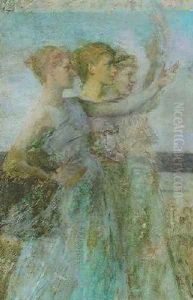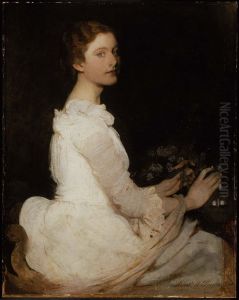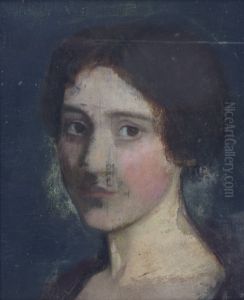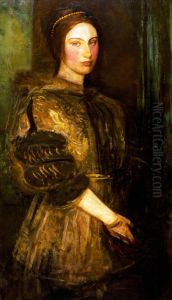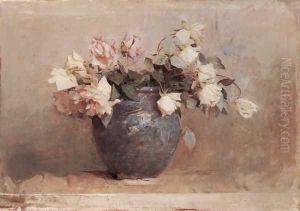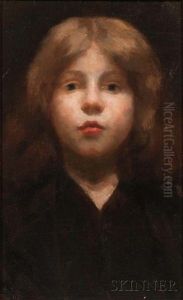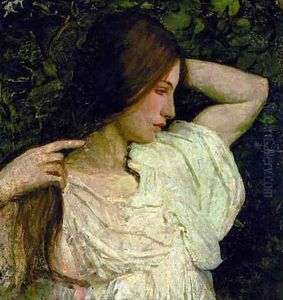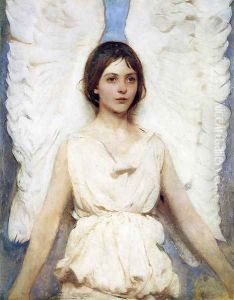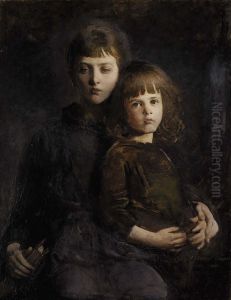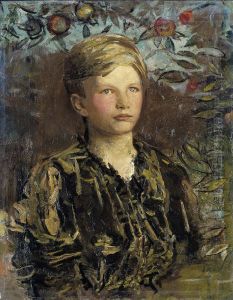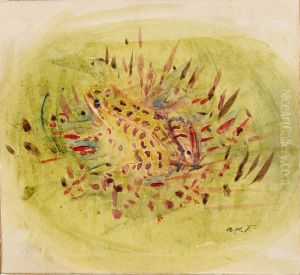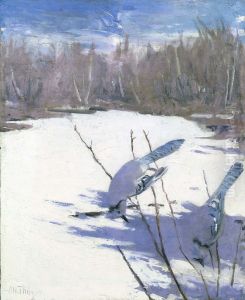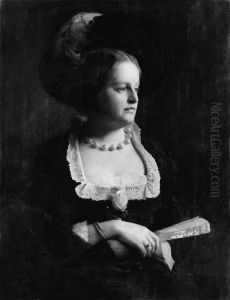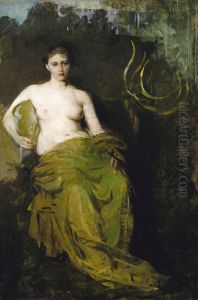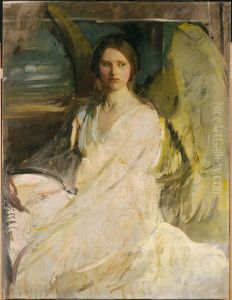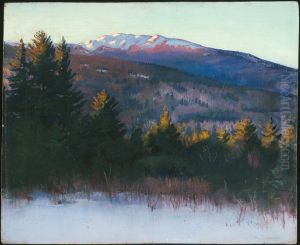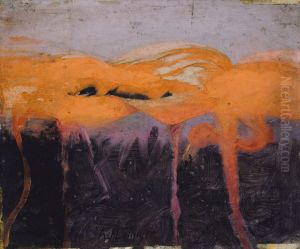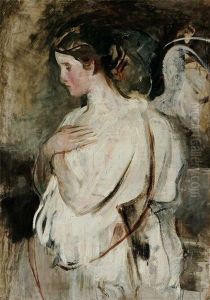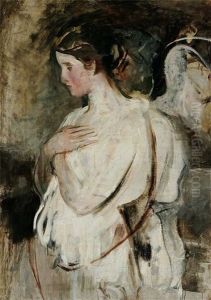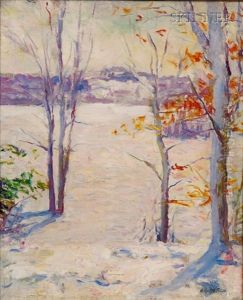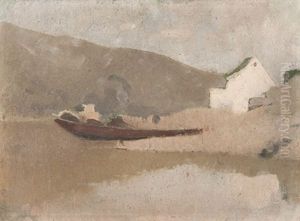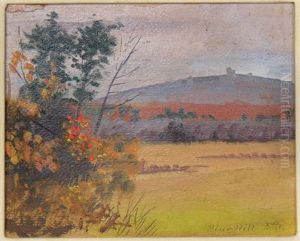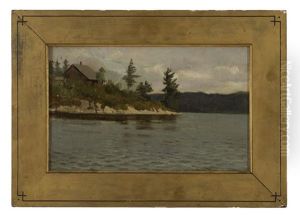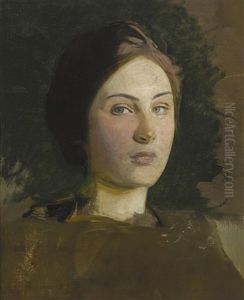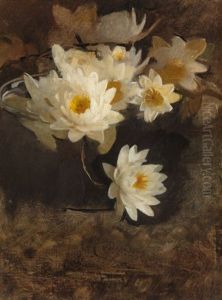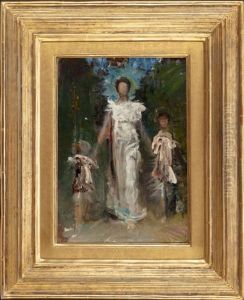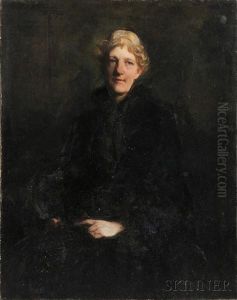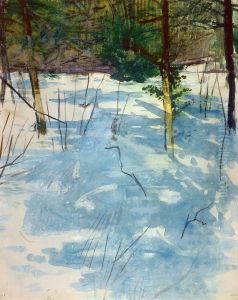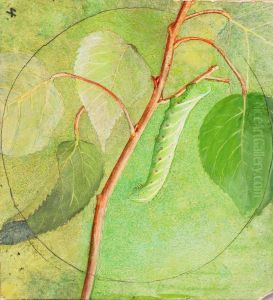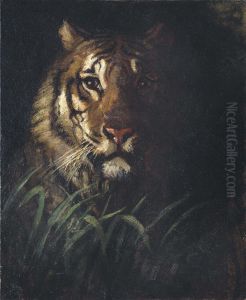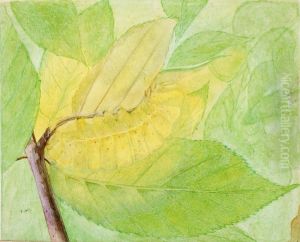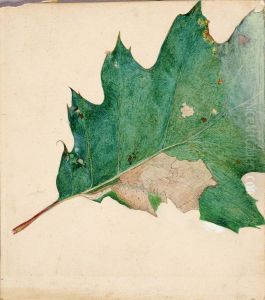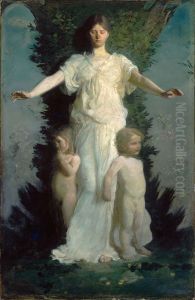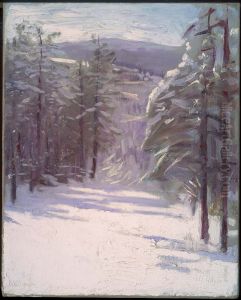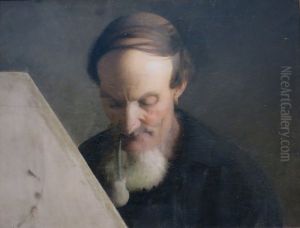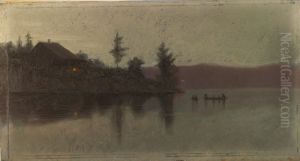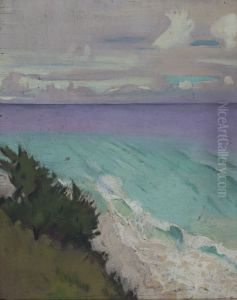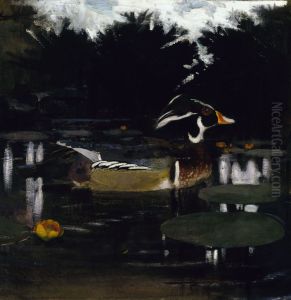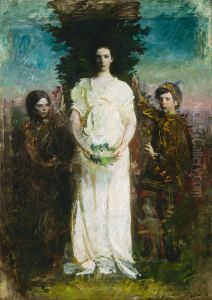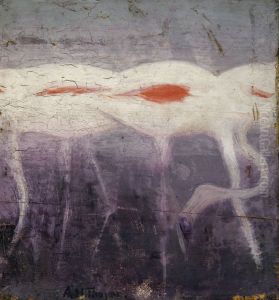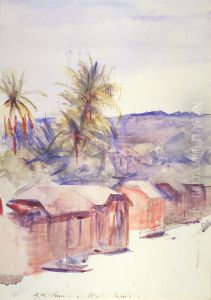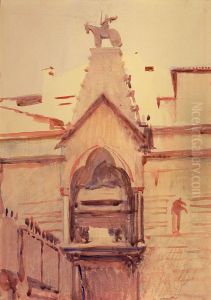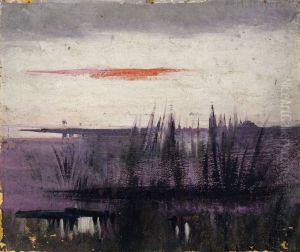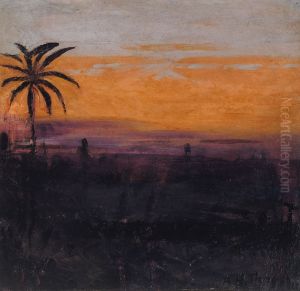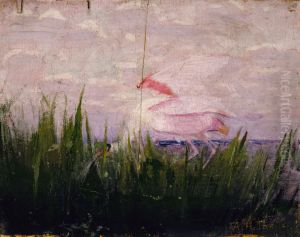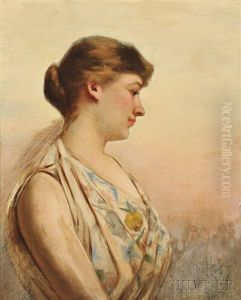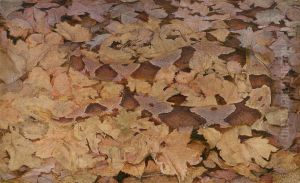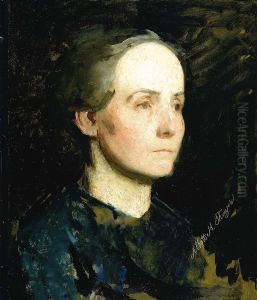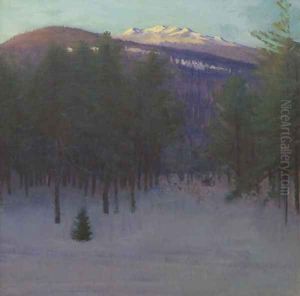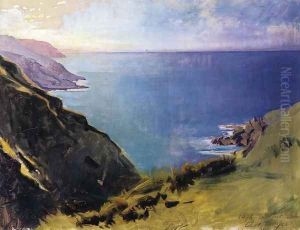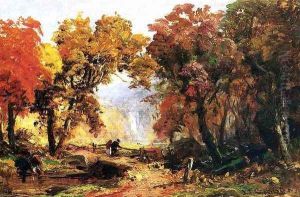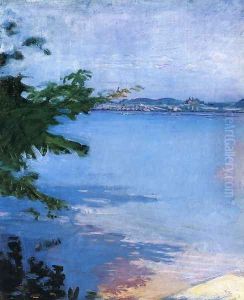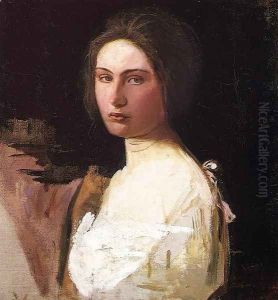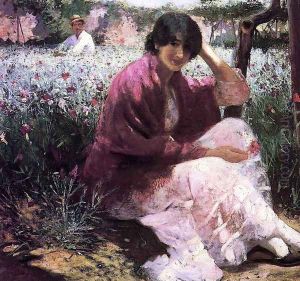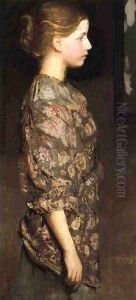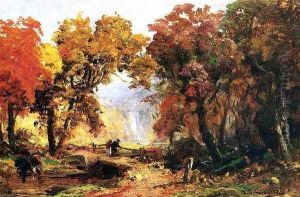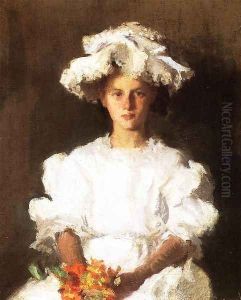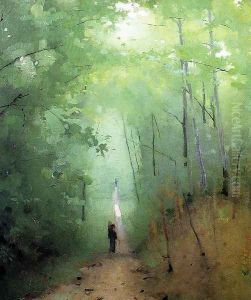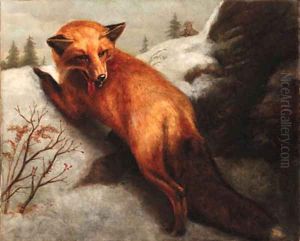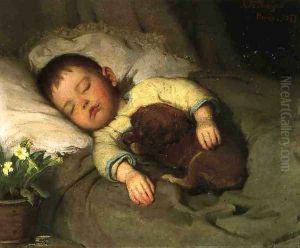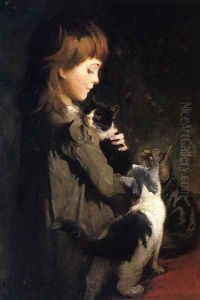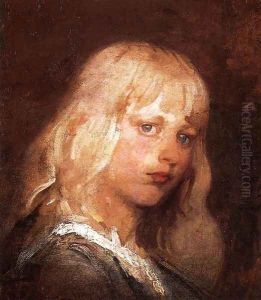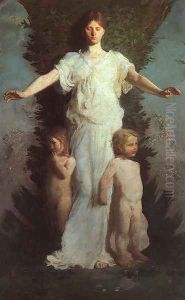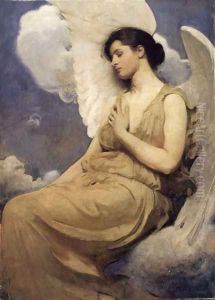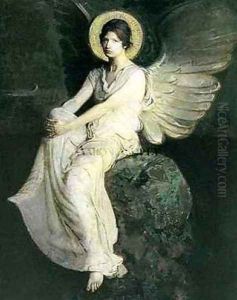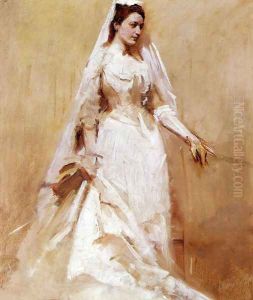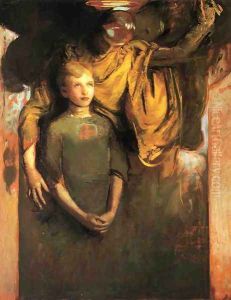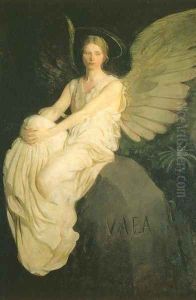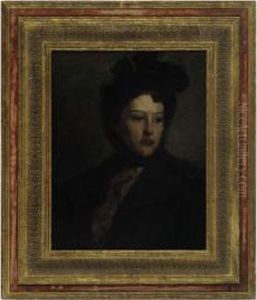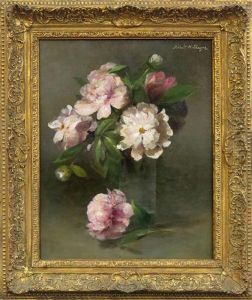Abbott Handerson Thayer Paintings
Abbott Handerson Thayer was an American artist, born on August 12, 1849, in Boston, Massachusetts. He is known primarily for his ethereal angel figures as well as for his works in natural history and is often referred to as the 'father of camouflage' for his theories on disruptive coloration in the animal kingdom.
Thayer's early life was marked by the loss of his mother to tuberculosis when he was still a young child, an event that significantly affected him and influenced his later work. He began studying art at the Brooklyn Art School and the National Academy of Design in New York. His initial work was characterized by portraits and genre scenes.
In 1875, Thayer journeyed to Paris to continue his art education at the École des Beaux-Arts, where he studied under Jean-Léon Gérôme, a prominent French painter and teacher. Upon returning to the United States in 1879, Thayer settled in New York and began to establish himself as a portrait artist. He painted many prominent figures of the time and was known for his ability to capture the personality and essence of his subjects.
However, Thayer is perhaps best known for his idealized and often religious-themed works, notably his paintings of angels, which combine realism with a sense of spiritual transcendence. These works typically feature young women or children against dreamy, natural backgrounds, and they reflect Thayer's interest in spirituality and the natural world.
Thayer's fascination with nature also led him to study and write about animal camouflage, and he developed the concept of 'concealing coloration.' During World War I, Thayer and his son, Gerald H. Thayer, co-authored a book titled 'Concealing-Coloration in the Animal Kingdom,' presenting their ideas on how disruptive patterns and colorations could be used to conceal military equipment and personnel. Although their theories were not widely adopted during World War I, they influenced later camouflage techniques.
Throughout his life, Thayer struggled with mental health issues and personal losses, yet he continued to paint until his death on May 29, 1921, in Dublin, New Hampshire. His works are held in many major museums, and he is recognized as a significant figure in American art history for both his artistic contributions and his pioneering ideas on camouflage.
